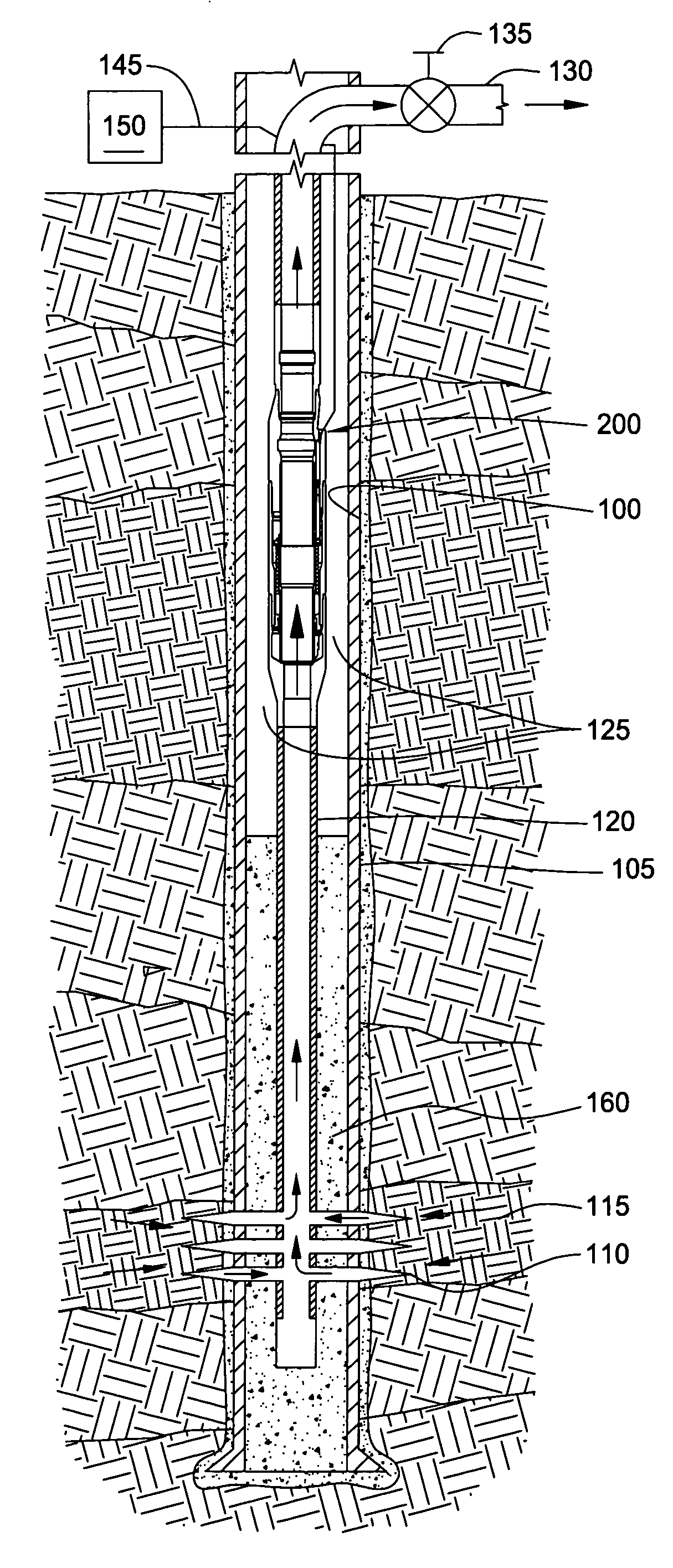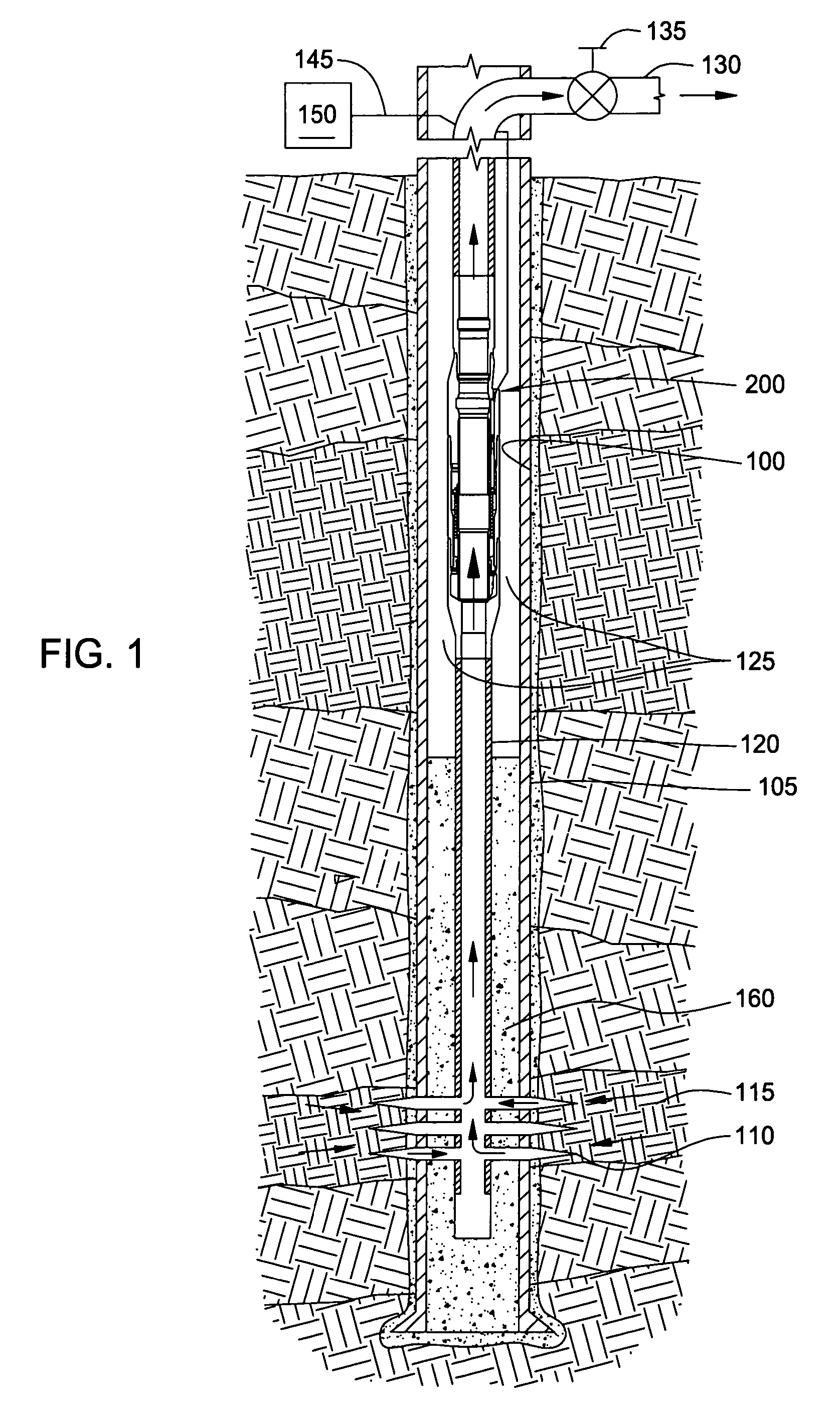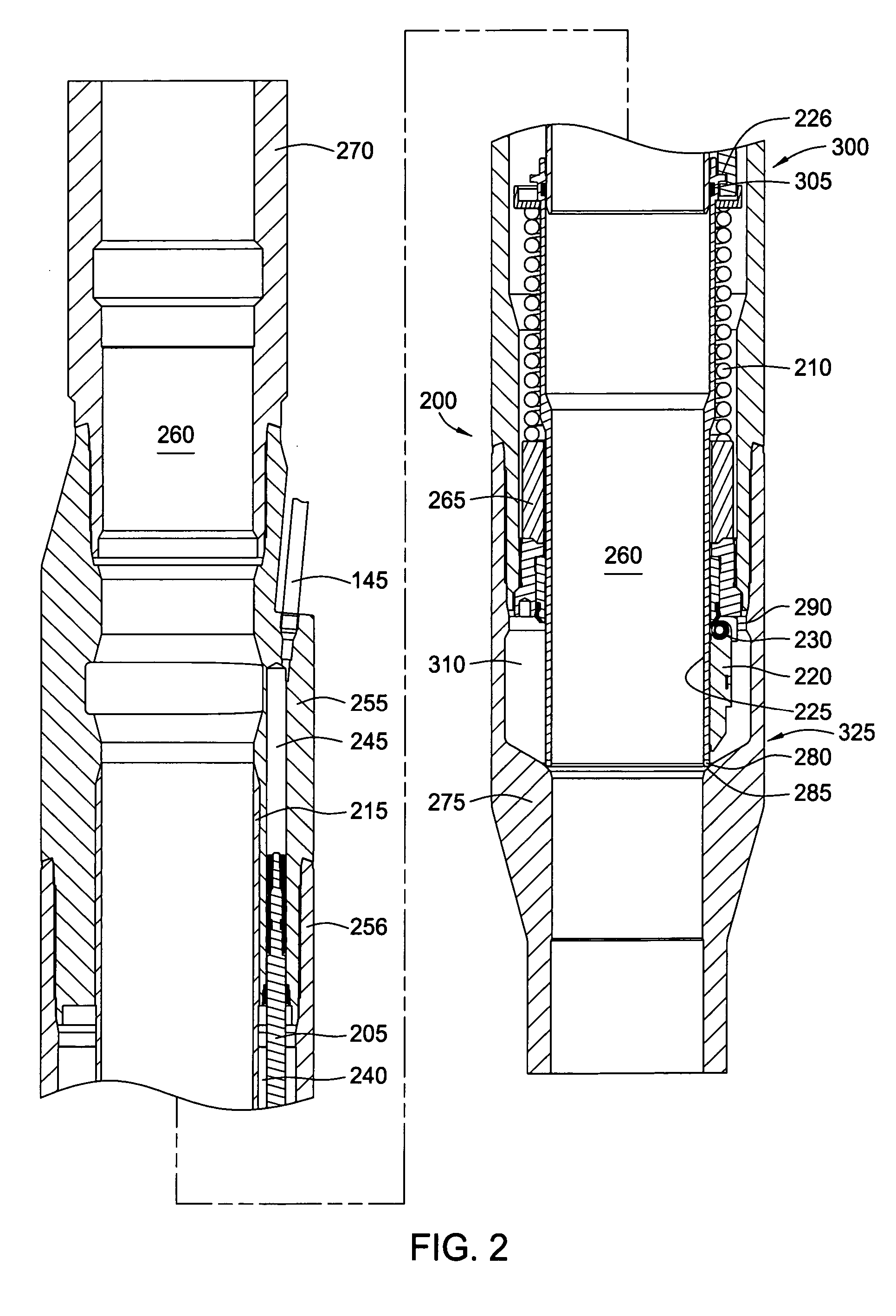Non-elastomer cement through tubing retrievable safety valve
a safety valve and non-elastomer cement technology, applied in the field of safety valves, can solve the problems of affecting the actuation mechanism, the retraction of the piston and the flow tube, and the breakage of the fluid communication between the surface reservoir and the control line, so as to eliminate the potential for contaminants
- Summary
- Abstract
- Description
- Claims
- Application Information
AI Technical Summary
Benefits of technology
Problems solved by technology
Method used
Image
Examples
Embodiment Construction
[0023] The present invention is generally directed to a tubing-retrievable subsurface safety valve for controlling fluid flow in a wellbore. Various terms as used herein are defined below. To the extent a term used in a claim is not defined below, it should be given the broadest definition persons in the pertinent art have given that term, as reflected in printed publications and issued patents. In the description that follows, like parts are marked throughout the specification and drawings with the same reference numerals. The drawings may be, but are not necessarily, to scale and the proportions of certain parts have been exaggerated to better illustrate details and features described below. One of normal skill in the art of subsurface safety valves will appreciate that the various embodiments of the invention can and may be used in all types of subsurface safety valves, including but not limited to tubing retrievable, wireline retrievable, injection valves, or subsurface controll...
PUM
 Login to View More
Login to View More Abstract
Description
Claims
Application Information
 Login to View More
Login to View More - R&D
- Intellectual Property
- Life Sciences
- Materials
- Tech Scout
- Unparalleled Data Quality
- Higher Quality Content
- 60% Fewer Hallucinations
Browse by: Latest US Patents, China's latest patents, Technical Efficacy Thesaurus, Application Domain, Technology Topic, Popular Technical Reports.
© 2025 PatSnap. All rights reserved.Legal|Privacy policy|Modern Slavery Act Transparency Statement|Sitemap|About US| Contact US: help@patsnap.com



